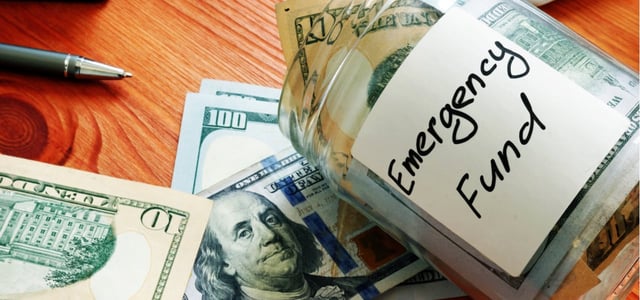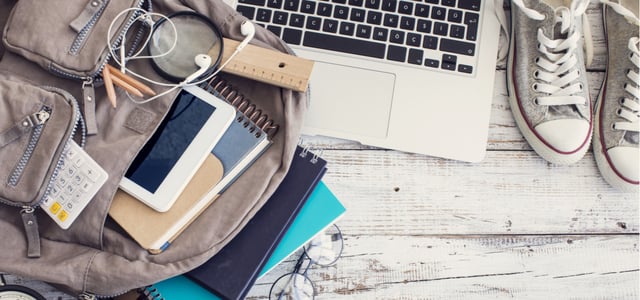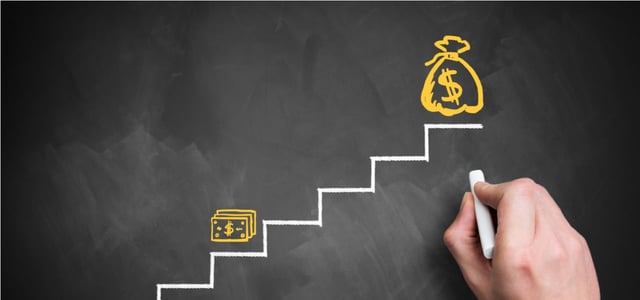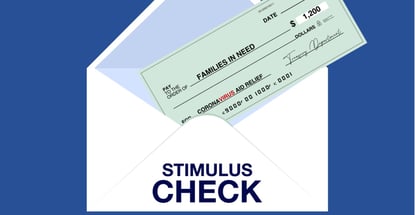Money is tighter than it’s ever been before for many U.S. households. In fact, a report on the financial impact of COVID-19 by Haven Life found that 61% of Americans lost household income as a result of the pandemic.
With so many people financially affected, talk of another stimulus check coming to consumers is no surprise. Although negotiations are on hold, hopeful families are eagerly planning how to spend this money once it arrives.
Whether you’re waiting for a new stimulus check or holding on to the last one, here are six smart ways to use stimulus money.
1. Kick-Start an Emergency Fund
If there’s anything the pandemic has taught the American people, it’s that life is full of unpredictable moments. And, preparing for the unexpected is crucial.
Unfortunately, too many people didn’t have enough money to cover these tough times. Almost 3 in 10 U.S. adults have no money set aside for an emergency, according to Bankrate’s 2019 Financial Security Poll. And only 1 in 4 have a rainy day fund, but not enough to cover three months’ worth of living expenses.
At this point, building an emergency fund should be a priority for all consumers, but few have the means to do so right now. Saving anything is better than nothing, though, and your stimulus payment is a great place to start. You should ideally save three months’ worth of living expenses but keep building up to nine months or more if you’re self-employed.

Start your emergency fund by saving three months’ worth of living expenses and build up to nine months if you’re self-employed.
When deciding where to save your money, consider opening a high yield online savings account where you can earn more back on your savings. Traditional banks only pay .01 to .03% interest on savings, and online savings rates are as high as 1.05% right now, so depending on the option you choose, it’s an easy way to get something for nothing.
2. Pay Down High-Interest Debt
Consumers are expected to rack up more than $140 billion in credit card debt over the rest of 2020, according to WalletHub’s Credit Card Debt Study. If you feel comfortable with your savings balance, the next smart move to make with your stimulus check is to put it toward paying down high-interest credit card debt.
Your check may not be enough to pay off the balance in full but remember that you still reap the benefit of saving on interest fees when you reduce your debt load.
In addition to paying down a chunk of debt quickly with this extra money, consider transferring the rest of your credit card balance to a new card that offers 0% interest on balance transfers. Such offers are available for anywhere from 12 to 21 months, and it buys you more time to pay down that debt without racking up additional interest.
This is an especially great option during the pandemic for any individual who does not have extra money to pay more than the minimum due. Just make sure to read the fine print and pay down the balance in full before that promotional period is up. Otherwise, you may be on the hook to pay retroactive interest.
3. Buy School Supplies
As school needs shift and schools transition to virtual learning for the start of the fall semester, families are faced with increased expenses to ensure their children have adequate supplies to learn from home.
In fact, the 2020 Back-to-School Survey from Deloitte found that 51% of parents will spend more on internet-based learning resources and spend $400, on average, for computers and hardware and another $316 on electronic gadgets and digital subscriptions.

Parents will spend 51% more on internet-based learning resources for their children, according to the 2020 Back-to-School Survey from Deloitte.
With back-to-school costs soaring, using your stimulus check to pay for the essentials will make sure your kids have everything they need to succeed in this challenging environment. Before blowing your entire check on a new laptop or tablet, however, consider how you can make your stimulus check go further for school items.
For instance, look for refurbished electronics to save anywhere from 30% to 40% and shop secondhand marketplaces for desks and other furniture needs. You should always compare prices and look for online coupon codes through sites like CouponFollow.com where you can find deals like 20% off at Office Depot or 10% off everything at Overstock.com.
4. Refinance Your Mortgage Loan
If your monthly mortgage payment is making it difficult for you to stay afloat or reach your savings goals, consider taking advantage of these current low mortgage rates, and refinance your home loan. Not only can this lower your monthly payment, but you may also be able to reduce your loan repayment timeline to pay it off faster and save even more on interest.
Just make sure you’re shopping around for lenders because rates can vary and ask about any fees for closing so there are no surprises. You may be able to score a lower rate if you purchase points, which your stimulus check could cover, reducing your monthly payment even further.
Before you pull the trigger, run the math to make sure the costs to refinance are worth the savings. Your lender can help you determine this, so be sure to ask.
5. Learn a New Professional Skill
Some industries have been hit harder than others during the coronavirus outbreak, including the service, travel, and retail industries. For workers in these industries who were furloughed or let go and are struggling to find new opportunities, learning a new skill may be their only ticket to landing a job in a different industry.
In fact, 87% of people learning new skills for professional development report career benefits that include getting a promotion, a raise, or starting a new career, according to Coursera’s 2019 Learner Outcomes Survey. The good news is you can take many continuing education and professional courses online to improve your current skill set or add to it — and your stimulus check can help foot the bill.

According to the 2019 Coursera Learner Outcomes Survey, 87% of people learning for professional development report career benefits like getting a promotion, a raise, or starting a new career.
At Coursera, for instance, you can find a wide range of virtual courses and work toward various certificates in marketing, finance, and business management, all at affordable rates. Completing the course and receiving the certificate is a powerful tool you can use for new job interviews to be a viable applicant.
6. Create an At-Home Gym
With most fitness centers around the country remaining closed during the coronavirus outbreak, you may be putting your exercise program on hold. However, spending a small portion of your stimulus check to set up an at-home workout space will not only aid in physical and mental health benefits, but it could also improve your overall finances, too.
A report from the Journal of the American Heart Association says you could save up to $2,500 a year in healthcare costs by exercising regularly — at least 30 minutes of moderate-intensity aerobic activity five days per week — compared with people who don’t exercise.
You don’t have to spend a lot of money on fitness to reach these results, either. For instance, you can find adjustable weight dumbbells for under $50 or a set of resistance bands for less than $8 on Amazon.com. If you’re looking for cardio equipment like a treadmill or stationary bike, review local listings through Facebook Marketplace or OfferUp to save around 60% off regular retail prices.
Advertiser Disclosure
CardRates.com is a free online resource that offers valuable content and comparison services to users. To keep this resource 100% free, we receive compensation for referrals for many of the offers listed on the site. Along with key review factors, this compensation may impact how and where products appear across CardRates.com (including, for example, the order in which they appear). CardRates.com does not include the entire universe of available offers. Editorial opinions expressed on the site are strictly our own and are not provided, endorsed, or approved by advertisers.




![5 Wise Ways to Use Credit When Planning a Wedding ([updated_month_year]) 5 Wise Ways to Use Credit When Planning a Wedding ([updated_month_year])](https://www.cardrates.com/images/uploads/2019/06/wise-ways-to-use-credit-when-planning-a-wedding-feat.jpg?width=158&height=120&fit=crop)
![9 Ways to Make Money Using Credit Cards ([updated_month_year]) 9 Ways to Make Money Using Credit Cards ([updated_month_year])](https://www.cardrates.com/images/uploads/2021/03/Ways-to-Make-Money-Using-Credit-Cards--1.jpg?width=158&height=120&fit=crop)

![Can You Pay a Credit Card with a Credit Card? 3 Ways Explained ([updated_month_year]) Can You Pay a Credit Card with a Credit Card? 3 Ways Explained ([updated_month_year])](https://www.cardrates.com/images/uploads/2017/02/card-with-card-2.png?width=158&height=120&fit=crop)
![2 Ways to Check Chase Credit Card Application Status ([updated_month_year]) 2 Ways to Check Chase Credit Card Application Status ([updated_month_year])](https://www.cardrates.com/images/uploads/2017/02/chase-credit-application-status1-2.png?width=158&height=120&fit=crop)
![3 Ways: Get a Lower Interest Rate on Credit Cards ([updated_month_year]) 3 Ways: Get a Lower Interest Rate on Credit Cards ([updated_month_year])](https://www.cardrates.com/images/uploads/2017/09/lowerinterest.png?width=158&height=120&fit=crop)

